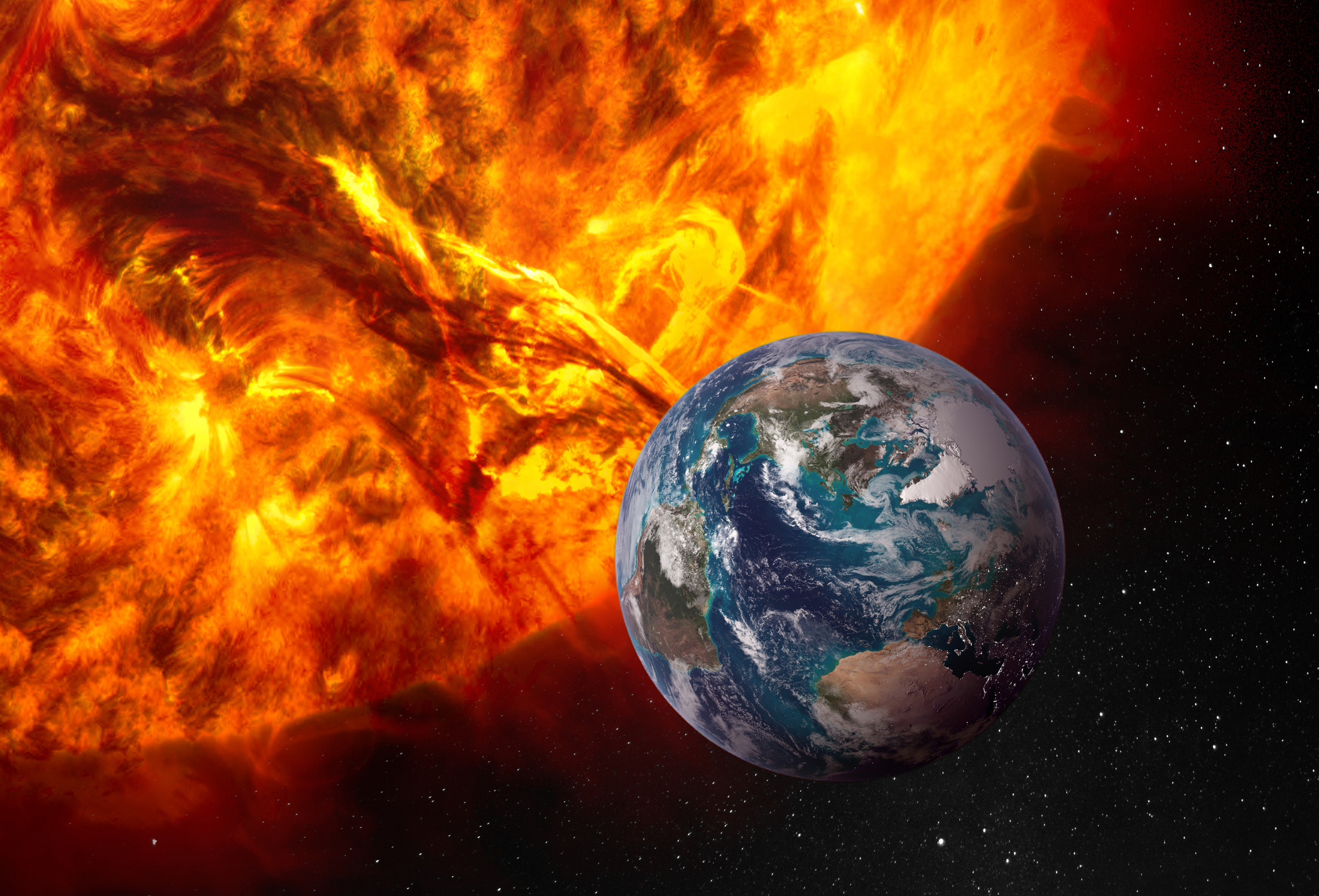Solar storms, known for their dramatic flares and geomagnetic disturbances, are a striking feature of our sun’s activity. These storms impact Earth’s space environment in significant ways, but the question arises: could they also influence the Earth’s rising temperatures? This open-ended exploration examines historical data on solar storms and corresponding heat waves, aiming to discern if a potential connection exists between these phenomena.

Recent Solar Storms and Heat Waves
April-May 2024 Solar Storms
Between April 30 and May 12, 2024, a series of intense solar storms took place, including X1.2(X1.3)-class and X4.5-class flares. These storms peaked with a K-index of 5, indicating strong geomagnetic activity. At the same time, India and Pakistan experienced a severe heat wave. New Delhi recorded temperatures up to 49°C (120°F), although an initial higher record was later corrected due to a faulty sensor. In Pakistan, temperatures soared to 52.2°C (126.0°F).
February 2022 Solar Storms
A mild geomagnetic storm in February 2022 led to increased atmospheric drag, causing the premature reentry of 40 SpaceX Starlink satellites. Simultaneously, California faced record-breaking temperatures over 24°C (75°F), and India experienced one of the hottest March-April periods on record starting late March 2022.
September 2017 Solar Storms
An X13-class solar flare was recorded in September 2017. This period also saw a heat wave in the Eastern United States and parts of Eastern Canada, producing unusually high temperatures late in the year.
Historical Context
March 2015 Solar Storms
The largest geomagnetic storm of Solar Cycle 24 occurred in March 2015, followed by a devastating heat wave in India from April to May 2015. Temperatures ranged between 45°C and 47°C (113-117°F), leading to over 2,200 deaths. Pakistan also experienced a severe heat wave in June 2015, resulting in over 2,500 fatalities.
2003 Solar Storms
The Halloween solar storms of October 2003 were among the most intense of the Space Age, including an X45-class flare on November 4. During this period, a significant heat wave hit Europe, particularly affecting Spain, England, and France, with nearly 15,000 deaths reported in France alone.
August 1972 Solar Storms
The August 1972 solar storm was notable for its rapid CME transit and extreme solar particle event. Concurrently, the northeastern United States experienced prolonged heat waves, lasting almost 16 days and resulting in nearly 900 deaths.
May 1921 Solar Storms
In May 1921, one of the most extreme known geomagnetic storms occurred, causing widespread technological disruptions. That year, Eastern Canada and parts of the Northeastern United States recorded the hottest July on record, contributing to an overall very warm year.
Exploring The Correlation
The data indicates a temporal correlation between solar storms and heat waves, suggesting a potential connection. However, the direct causative link between solar storms and rising Earth temperatures is not conclusively established.
Solar storms impact Earth’s magnetosphere and can increase atmospheric drag, indirectly affecting satellite operations. The direct effect of solar radiation on Earth’s surface temperatures, however, seems minimal compared to the primary drivers of global warming, such as greenhouse gas emissions and human activities.
Given the frequent concurrence of solar storms and heat waves, it is worth considering whether solar activities might play a more subtle role in climatic variations. While the predominant causes of global temperature rise are anthropogenic, solar influences could contribute to short-term temperature spikes or regional climate anomalies.
Conclusion
The potential connection between solar storms and Earth’s rising temperatures remains an intriguing possibility. While current evidence does not firmly establish solar storms as a significant driver of global warming, their role in short-term climatic fluctuations warrants further investigation. Understanding the complex interplay between solar activities and Earth’s climate could provide valuable insights into our planet’s dynamic systems. Further research and advanced modeling are essential to explore this potential connection and its implications for our understanding of climate change.
References:
- https://en.wikipedia.org/wiki/List_of_solar_storms
- https://www.jpl.nasa.gov/nmp/st5/SCIENCE/storms.html
- https://www.isro.gov.in/ISROCapturestheSignaturesoftheRecentSolarEruptiveEvents.html
- https://en.wikipedia.org/wiki/Solar_flare
- https://en.wikipedia.org/wiki/Heat_wave
- https://en.wikipedia.org/wiki/List_of_heat_waves
- https://www.who.int/india/heat-waves

